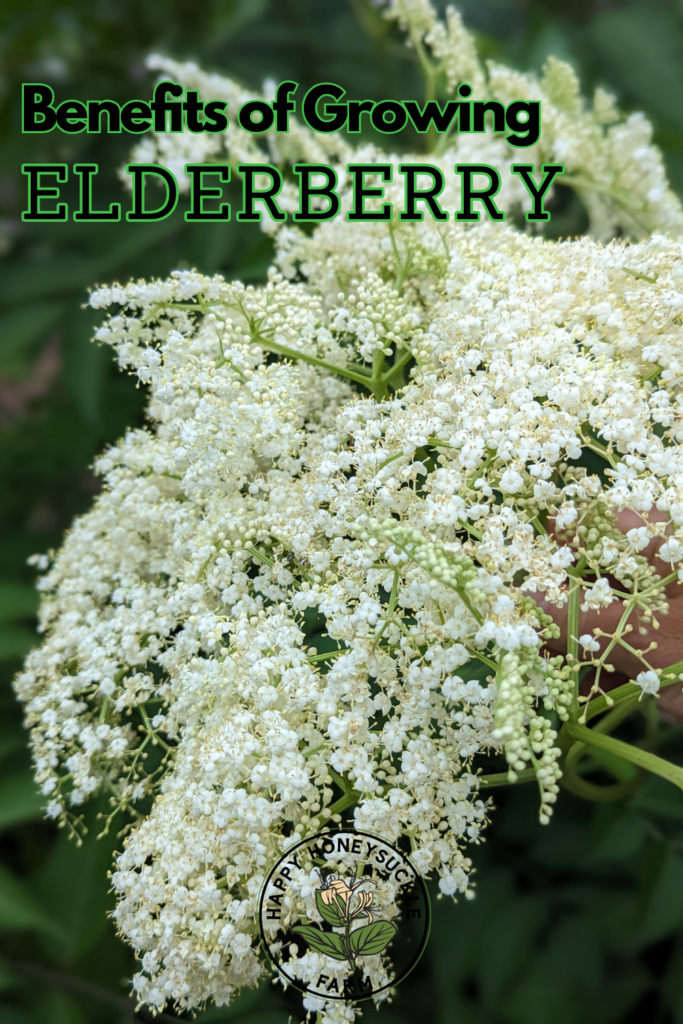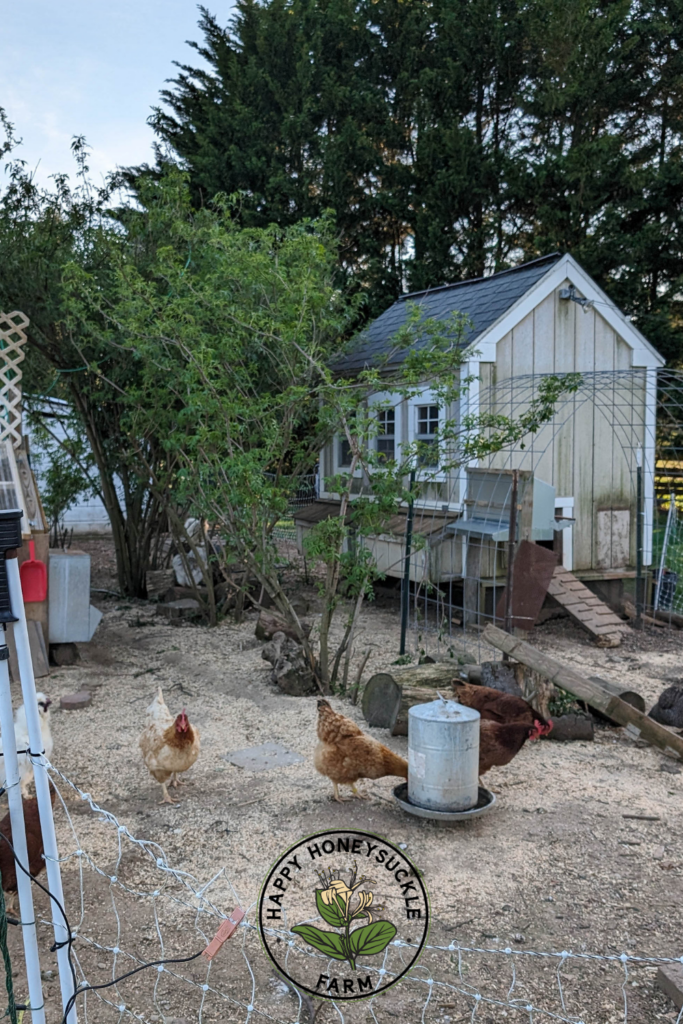
Elderberries have captured the hearts of gardeners and health enthusiasts alike, and it’s no surprise why. This versatile plant not only adorns gardens with its lovely flowers and fruits but also offers a treasure trove of health benefits. If you’re considering adding a new plant to your garden, elderberry is a choice that’s as wise as it is delightful.
This post may contain affiliate links which may earn me commissions should you click through them and take certain actions. As an affiliate for Amazon and other sites, I earn from qualifying purchases. This is a blog. It should not be considered professional advice. Research topics carefully to ensure that you’re getting the most up-to-date information. Please read the whole post so you don’t miss any important information!
Here’s why you should grow elderberry in your garden:
Aesthetic Appeal
Elderberry plants are a beautiful addition to any garden. In early summer, they produce clusters of tiny, white or cream flowers known as elderflowers. These fragrant blossoms not only add a lovely visual contrast against the lush, green foliage but also attract pollinators such as bees and butterflies, supporting the local ecosystem. As summer progresses, the flowers give way to drooping clusters of dark purple-to-black berries, adding further visual interest and attracting birds.
Health Benefits
Elderberries are famed for their health-promoting properties. Packed with vitamins (especially vitamin C) and antioxidants, they are often used in syrups, teas, and other concoctions to boost immune system function, especially during cold and flu season. The antioxidants help combat free radicals, potentially reducing oxidative stress and inflammation in the body.
Culinary Uses
The uses of elderberries in the kitchen are extensive and exciting. The berries can be cooked into jams, jellies, and pies, or used to make wine and cordials.
Elderflowers are not only beautiful, but also edible; they are commonly used to make a flavorful, soothing tea or the famous elderflower cordial, which serves as a base for various refreshing beverages and cocktails.
It’s important to note that in MOST CASES you should NOT eat elderberry raw. It will give you a bellyache. This is one of the reasons it’s so pest resistant.
Ease of Cultivation
Elderberry plants are hardy and adaptable, making them suitable for a wide range of climates and soils. They are particularly forgiving for novice gardeners because they require minimal care once established. Elderberries thrive in full sun to partial shade and prefer well-drained soil, but they can also tolerate less ideal conditions once they’re well established.
While they LOVE water and it’s helpful to get them established, if you have a relatively decent climate without long periods of drought, it will probably thrive will very little effort on your part. I have simply stuck cuttings in the ground and they have taken off on their own.
Wildlife and Ecological Benefits
Growing elderberries contributes positively to your garden’s ecosystem. The flowers provide nectar for pollinators, while the berries are a vital food source for birds. Additionally, elderberry plants can improve soil quality and prevent soil erosion, thanks to their extensive root systems.
Medicinal Uses
Historically, elderberries have been used in folk medicine to treat various ailments. Modern research has explored their potential to alleviate symptoms of cold and flu, and while elderberries should not replace conventional medical treatment, they can be a beneficial supplement to overall health strategies.
Other Uses
The wood from the elderberry can be used for crafts, and some people use the leaves or wood to help ward off pests like flies. I’m going to try hanging the cuttings in my barn to see if it helps with flies this summer.
Economic Advantage
With the growing popularity of elderberries in health products, cultivating your own elderberry plants can offer significant savings over purchasing commercial elderberry products, which can be pricey. Furthermore, if you have a large enough crop, you could even consider selling your surplus berries at local markets.
Considerations Before Planting
While elderberries are relatively easy to grow, it’s important to note that raw elderberries, their leaves, seeds, and stems are toxic and should not be consumed without proper preparation. Always cook elderberries before use, and be mindful of where you plant them if you have children or pets. However, I’ve found that my chickens leave the plants alone, although they often hide in the shade of the elderberry. The actual berries are mostly out of reach and they don’t seem interested in them. I’m currently trying to grow an elderberry hedge next to my goat fencing.
Also- understand that the reason that pests leave this plant alone is because it SMELLS BAD. It’s not particularly bothersome to me (and I’m sensitive) most of the time, but when I need to pull tiny seedlings up or prune the plant, I prefer to use gloves so the smell doesn’t stay on my hands all day. It’s not the worst smell (Tree of Heaven takes that award), but I just don’t love it.
Getting Started
To start growing elderberries, choose a variety suited to your local climate and soil conditions. You can start with either seeds or cuttings in early spring, planting them in moist, fertile soil. Elderberries do well with about an inch of water per week and some basic fertilization during the growing season.
We put our elderberry next to our chicken coop and occasionally, as we clean the coop out, we toss dirty bedding in that area. The elderberry bushes seem to thrive in this space… it probably doesn’t hurt that the chickens will dig around, eat bugs, and fertilize that area themselves. The chickens love having a good cover over them for shade in the summer and there never seem to be many bugs around that area thanks to the elderberry.
Conclusion
Incorporating elderberry plants into your garden not only enhances its beauty and biodiversity but also offers you a direct source of nutrition and potential health benefits. Whether you’re drawn to their practical benefits, their ecological contributions, or simply their rustic charm, elderberries make a fulfilling addition to any garden. Start growing elderberry today, and reap the rewards season after season!


